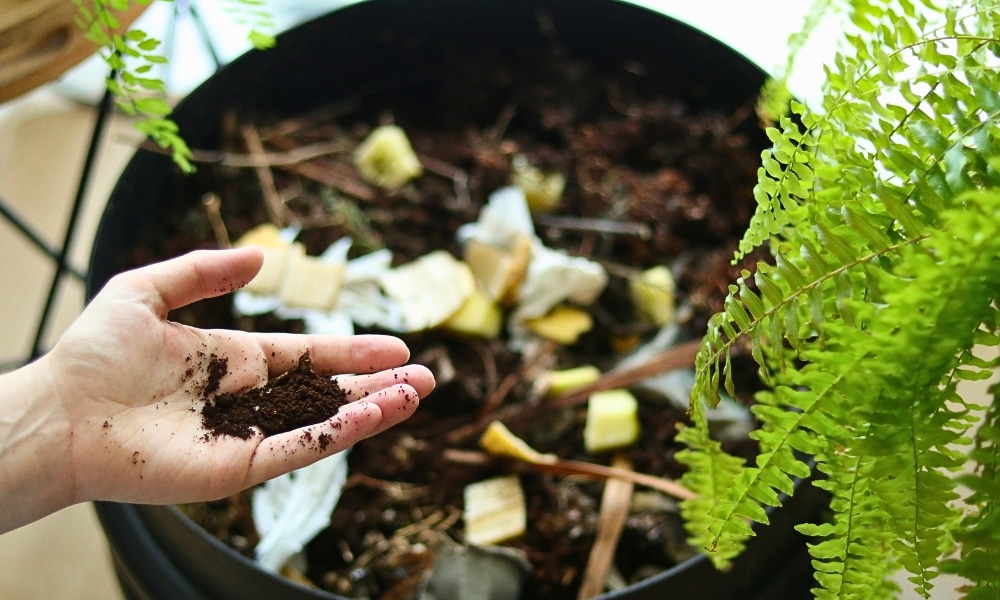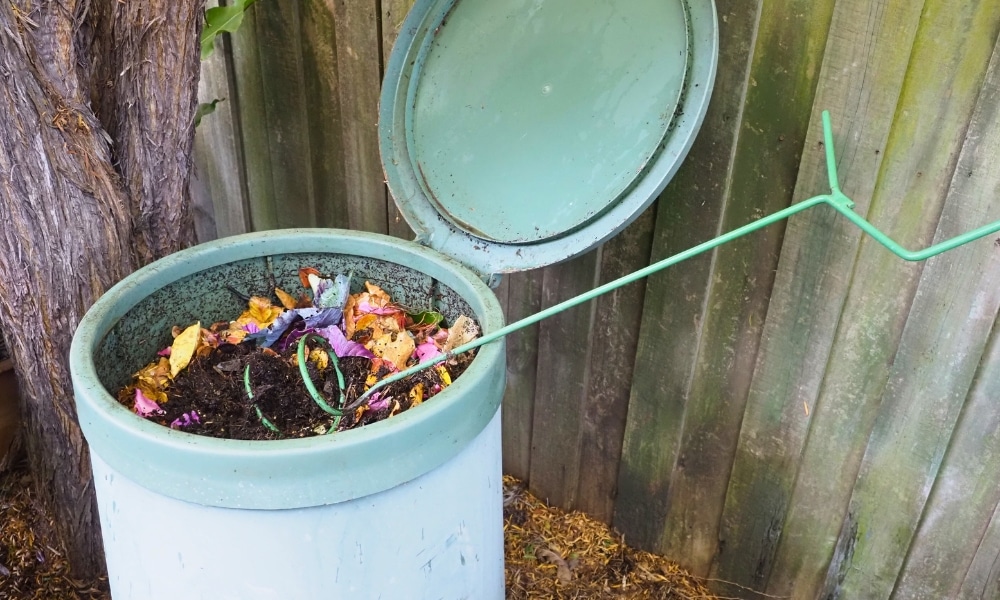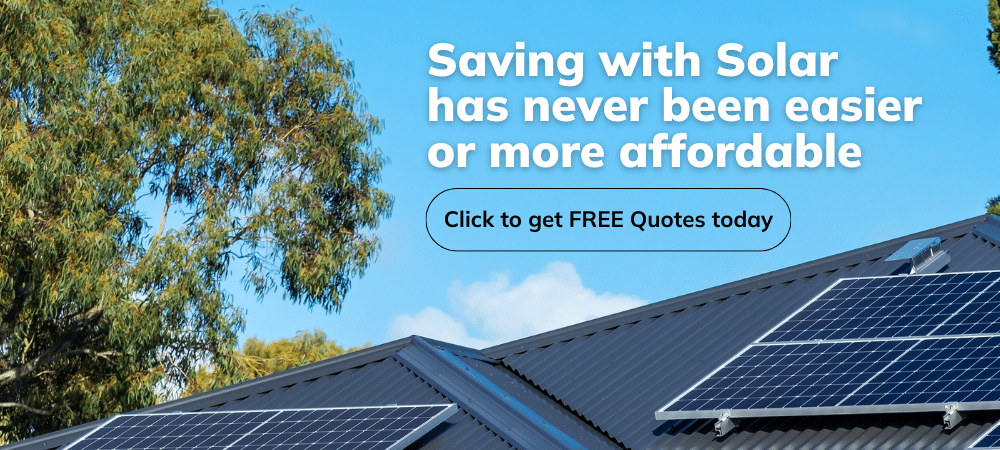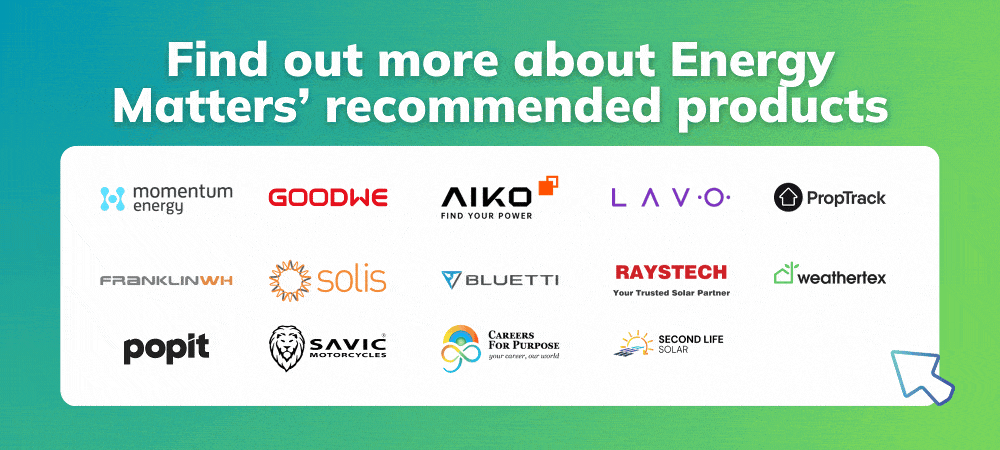In Australia, a land of diverse ecosystems, home composting is more than just a gardening trend; it’s an essential practice for sustainable living. Composting significantly reduces our environmental impact by diverting organic waste from landfills and creating nutrient-rich soil. This guide will walk you through setting up and maintaining a home compost bin, making organic waste composting accessible and rewarding for everyone.

On this page
Why composting is essential for Australian homes
Composting is an effective and environmentally friendly way to manage household organic waste, transforming kitchen scraps and garden clippings into nutrient-rich soil amendments. In Australia, where households generate approximately 2.5 million tonnes of food waste annually—accounting for about 30% of the nation’s total food waste—implementing home composting can significantly reduce the amount of waste sent to landfills: source—Reducing Australia’s food waste-Department of Climate Change, Energy, the Environment and Water (DCCEEW-03 January 2025).
Moreover, Australian climates, from the humid coasts to the arid outback, provide ideal conditions for composting when managed correctly. By composting, you actively participate in sustainable living, helping the environment and enhancing your backyard garden.
Here are the key benefits of home composting.
- Reduces landfill waste: Landfills generate significant methane, a potent greenhouse gas. Composting diverts organic waste from landfills, such as food scraps and yard trimmings, minimising their environmental impact.
- Enriches soil: Compost is a natural fertiliser teeming with beneficial microorganisms that improve soil structure, increase water retention, and enhance plant nutrient availability.
- Saves money: By producing your fertiliser, you can reduce reliance on expensive commercial fertilisers, saving you money in the long run.
- Benefits the environment: Composting promotes a circular economy by returning organic matter to the soil, improving its health and supporting a thriving ecosystem.
Did you know Energy Matters is Australia’s largest renewable news, blog and educational resource? Subscribe to Energy Matters’ weekly newsletter and keep updated even with incentives, rebates and recommended solar product offers.
Getting started: The basics of composting
1. Choosing the right compost bin
The type of home compost bin you choose depends on your space, budget, and composting style. Popular options include:
- Heap composting: The most straightforward method involves piling organic materials directly on the ground. It requires more space and can be visually unappealing.
- Bin composting: Enclosed bins contain the compost, reduce odour, and attract pests.
- Tumbling composters: Rotating bins that speed up the composting process. They are suitable for smaller spaces and can be purchased or DIY-built.
- Static bins: Enclosed bins that require manual turning.
- Worm farming (vermicomposting): Utilises worms to break down organic waste quickly and efficiently. It is ideal for smaller spaces and produces high-quality compost.
2. Understanding the components of compost: The composting essentials
The “Brown” and “Green” balance: Effective composting requires a balanced mix of “green” and “brown” materials.
- Green materials (nitrogen-rich)
- Brown materials (carbon-rich)
|
Greens |
Browns |
|
Fresh grass clippings/leaves |
Dead/dry leaves: Fallen leaves from deciduous trees |
|
Coffee grounds |
Shredded paper: Cardboard (not glossy), newspaper, brown paper bags, paper egg carton |
|
Fruit and vegetable peels and rind |
Wood chips: Small branches, twigs |
|
Tea bags |
Used paper coffee filters |
|
Eggshells |
Straws |
Materials to avoid
The below materials can attract pests, introduce pathogens, or hinder composting. To maintain a healthy compost system, avoid adding the following:
|
What NOT to compost |
Reason |
|
Meat or fish (including bones) |
Attract pests and create unpleasant odours. |
|
Dairy products (eggs, milk butter, etc.) |
It can become rancid and attract pests. |
|
Oils and grease |
Difficult to decompose and can clog the compost. |
|
Diseased plants |
May spread diseases to other plants. |
|
Coal and charcoal |
Contain harmful chemicals. |
|
Pet waste |
It can contain harmful bacteria and parasites. |
3. Setting up your compost bin
Follow these steps to establish your home compost bin:
Step 1: Select a location
Choose a dry, shady spot with good drainage for your compost bin. Ensure it’s easily accessible for adding materials, turning the compost and good drainage to avoid attracting pests.
Step 2: Prepare the base
Place coarse materials like small branches or straws at the bottom to promote aeration and drainage.
Step 3: Add organic materials
Alternate “green” nitrogen-rich layers with “brown” carbon-rich materials. Aim for a ratio of approximately two to four parts brown materials to one part green materials.
Step 4: Maintain moisture
Keep the compost moist, similar to a damp sponge. If it becomes too dry, add water; if it is too wet, incorporate more brown materials.
Step 5: Aerate regularly
Turn the compost every few weeks to introduce oxygen, which aids decomposition and prevents odours.

4. Using your finished compost
When is it ready? Once your compost has matured (dark, crumbly, earthy smell), it’s ready to use! This process can take two months to a year, depending on material composition, aeration, and moisture levels.
Use finished compost to enrich garden beds, as a top dressing for lawns, or as a component in potting mixes. Incorporating compost into your soil enhances its fertility, structure, and moisture-holding capacity, leading to healthier plants and more productive gardens.
- Apply to garden beds: Mix compost into your garden beds before planting to improve soil fertility and drainage.
- Top dress existing plants: Spread a thin layer of compost around the base of established plants to provide nutrients and suppress weeds.
- Use as potting mix: Combine compost with other potting mix ingredients to create a nutrient-rich growing medium for container plants.
5. Maintaining your compost bin
- Moisture is key: Keep your compost pile slightly moist, like a wrung-out sponge. Avoid overwatering, which can create anaerobic conditions and produce unpleasant odours.
- Aeration is crucial: Regular turning of the compost pile or tumbling the bin introduces oxygen, which is essential for microbial activity and faster decomposition.
- Monitor temperature: Ideal composting temperatures range from 40-60°C. Monitor the temperature using a compost thermometer to ensure optimal decomposition.
- Patience is a virtue: Composting takes time. Depending on the method and materials used, your compost can take several weeks to months to fully mature.
Composting tips for beginners
- Chop materials: Cut larger items into smaller pieces to speed up decomposition.
- Balance greens and browns: Maintaining the proper ratio prevents the pile from becoming too wet or dry.
- Monitor temperature: A warm compost pile indicates active decomposition. If it cools down, turning the pile can help reactivate the process.
- Be patient: Composting can take several months. Regular maintenance will yield high-quality compost.
Troubleshooting common composting issues
- Unpleasant odours: Often caused by excess moisture or insufficient aeration. Improve drainage and increase air circulation.
- Slow decomposition: Check for proper “brown” to “green” ratio, adequate moisture, and sufficient aeration.
- Pest problems: Attractants like meat or dairy can attract pests. Ensure your bin is appropriately secured and avoid adding prohibited materials.
Composting resources in Australia
- Your local council: Many Australian councils offer resources and workshops on home composting, including information on local composting programs and regulations.
- Sustainability organisations: Organisations like Planet Ark and the Australian Conservation Foundation provide valuable information on sustainable living practices, including composting.
- Online resources: Numerous online resources and forums offer tips, advice, and support for beginner and experienced composters.
This information is for general guidance only and may not suit all situations. Always consult local authorities and experts for specific advice on composting in your area.
For a visual guide on starting your composting journey, you might find this video helpful:
Sources: Reducing Australia’s food waste – Department of Climate Change, Energy, the Environment and Water (DCCEEW), , Building a Compost Bay-Gardening Australia – ABC News, A beginner’s guide to composting – environment.sa.gov.au
Start composting today!
Creating a home compost bin is a rewarding and environmentally responsible endeavour. By embracing organic waste composting, you can reduce your environmental impact, improve your garden’s health, and contribute to a more sustainable future. Remember to start small, be patient, and enjoy the process of transforming your kitchen and garden waste into valuable soil.
Energy Matters encourages you to explore the benefits of home composting and take the first step towards a more sustainable and energy-efficient lifestyle.
Energy Matters has been recognised for our continued excellence in the Australian solar industry. We provide our customers with high-quality resources, insight, and access to reputable solar quotes.
Our team of solar experts can help you get up to 3 FREE solar quotes from pre-qualified and vetted solar firms in your area.













































